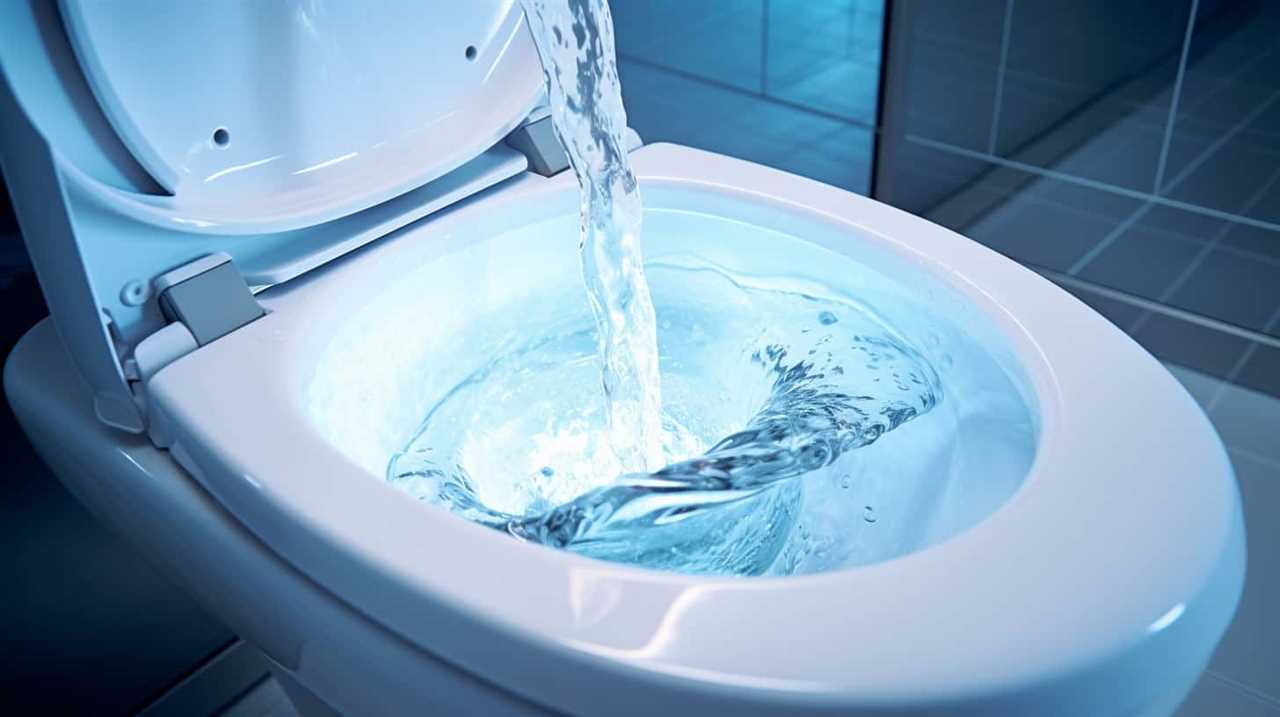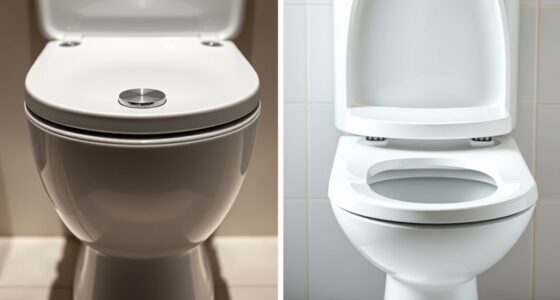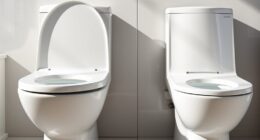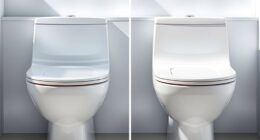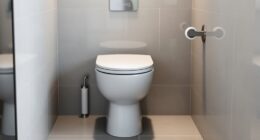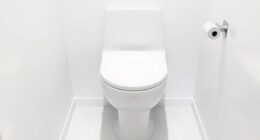Curious about the distinction between a single flush and dual flush toilet? Don’t worry, we have all the information you need right here.
In this article, we’ll delve into the technical aspects of these two types of toilets, providing you with all the information you need to make an informed decision.
From water usage and functionality to environmental impact and cost comparison, we’ll guide you through the factors you should consider when choosing the right toilet for your needs.
Let’s get started!
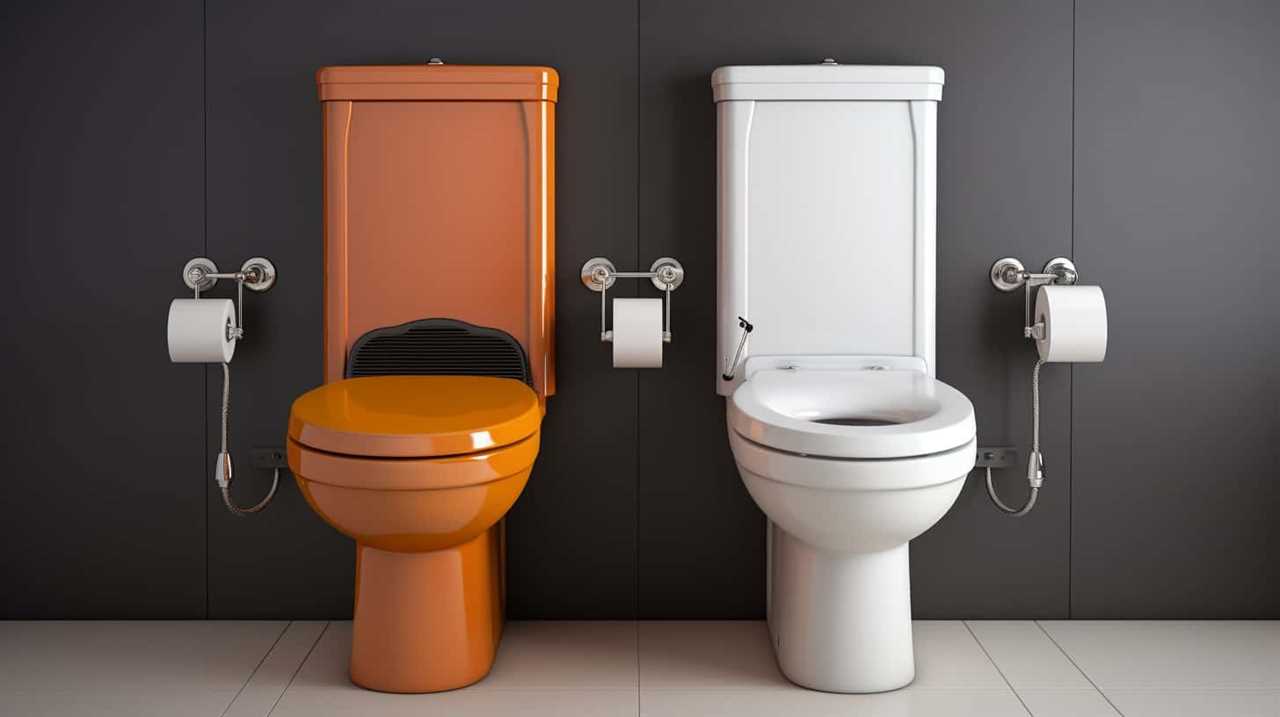
Key Takeaways
- Single flush toilets use a fixed amount of water for every flush, while dual flush toilets offer two options: a full flush and a half flush.
- Dual flush toilets allow for greater water conservation by giving users the choice to use less water for liquid waste.
- Dual flush toilets are more efficient in water usage compared to single flush toilets, contributing to environmental sustainability.
- Dual flush toilets may have higher installation costs and maintenance requirements, but can result in long-term water and cost savings due to their water-saving features and longer lifespan.
Water Usage: Single Flush Vs Dual Flush
When comparing water usage, it’s important to understand the differences between a single flush and a dual flush toilet. The design of a toilet plays a crucial role in water conservation efforts.
A single flush toilet uses a fixed amount of water for every flush, typically around 1.6 gallons per flush.
On the other hand, a dual flush toilet offers two options for flushing: a full flush and a half flush. The full flush is used for solid waste and utilizes the same amount of water as a single flush toilet.
However, the half flush is designed for liquid waste and uses significantly less water, usually around 0.8 gallons per flush.

This innovative design allows for greater water conservation, as it gives users the choice to use less water when appropriate.
Functionality: How Single Flush and Dual Flush Toilets Differ
To understand how single flush and dual flush toilets differ in functionality, let’s examine the mechanisms behind their water-saving designs.
Single flush toilets have a simple mechanism that uses a fixed amount of water for every flush. This results in consistent flushing power but may not be as water-efficient as dual flush toilets.
On the other hand, dual flush toilets offer users a choice between a full flush and a partial flush. The full flush option is used for solid waste, utilizing more water and providing greater flushing power. The partial flush option, on the other hand, is designed for liquid waste, using less water and providing sufficient flushing power. This allows for better water efficiency, as users can choose the appropriate flush option based on their needs.
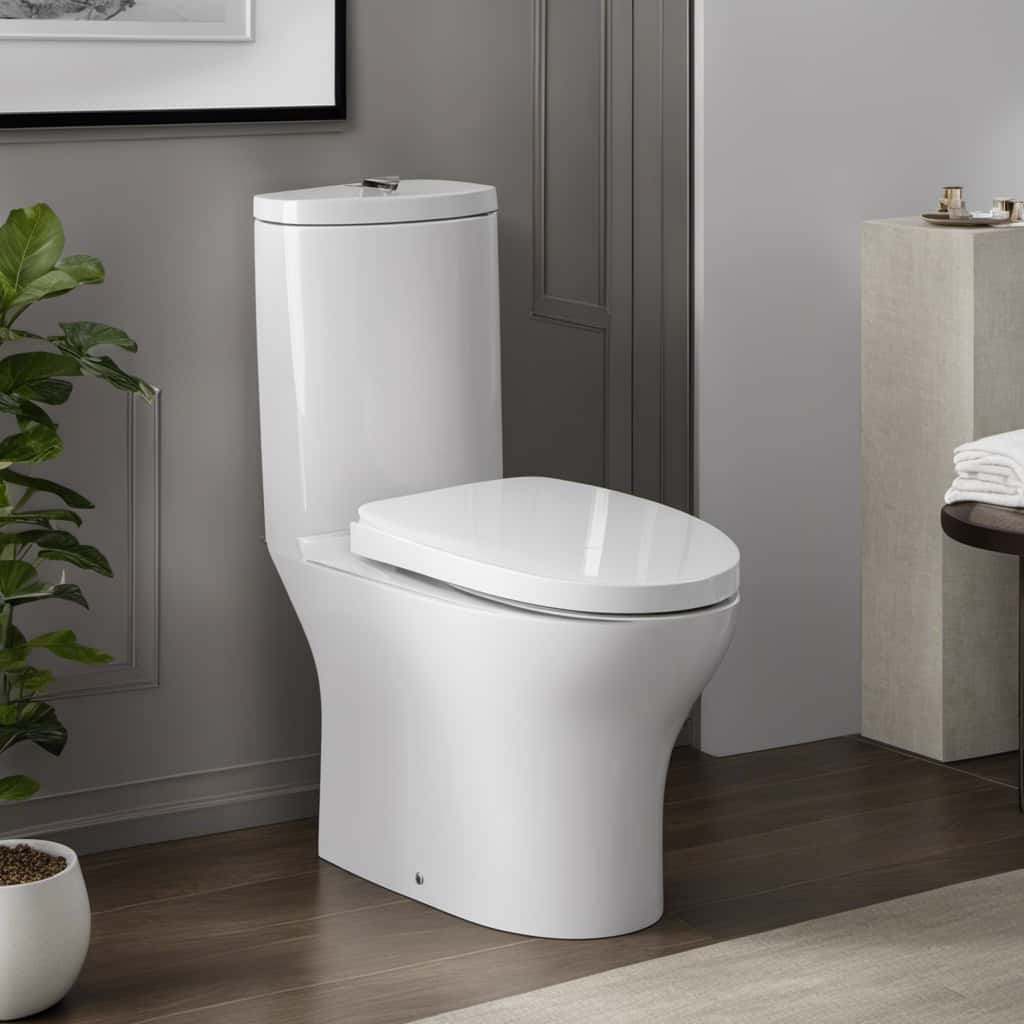
Environmental Impact: Single Flush Vs Dual Flush Toilets
The environmental impact of single flush and dual flush toilets differs significantly in terms of water conservation and usage. Dual flush toilets are designed to be more efficient in water usage compared to single flush toilets. This is achieved through the dual flush mechanism, which offers two options for flushing: a full flush for solid waste and a half flush for liquid waste. By providing this choice, dual flush toilets allow users to conserve water by using the appropriate flush for the type of waste. In contrast, single flush toilets have a fixed amount of water for each flush, regardless of the waste type. This table compares the water usage and efficiency of single flush and dual flush toilets:
| Toilet Type | Water Usage per Flush | Efficiency |
|---|---|---|
| Single Flush Toilet | 6 liters | Less efficient |
| Dual Flush Toilet | 3 liters (half flush) and 6 liters (full flush) | More efficient |
As shown in the table, dual flush toilets use less water per flush, making them more efficient in terms of water conservation. This not only helps reduce water consumption but also contributes to environmental sustainability.
Cost Comparison: Single Flush Vs Dual Flush Toilets
Moving on to the cost comparison between single flush and dual flush toilets, let’s delve into the financial implications of choosing one over the other. When considering the overall cost, there are a few key factors to take into account:
- Installation process: Dual flush toilets may require a slightly more complex installation process due to their dual flushing mechanisms. This could result in higher installation costs compared to single flush toilets.
- Maintenance cost: Dual flush toilets generally require more maintenance due to their more intricate design. Replacement parts for dual flush toilets may also be more expensive compared to single flush toilets.
- Water savings: Although the initial cost of a dual flush toilet may be higher, it can lead to long-term savings on water bills. The dual flush system allows for different water usage options, enabling users to conserve water and reduce costs.
- Lifespan: Dual flush toilets are often built with higher quality materials, which can result in a longer lifespan compared to single flush toilets. This means that while the initial cost may be higher, dual flush toilets may require fewer replacements over time, leading to potential cost savings in the long run.
Considering the installation process, maintenance cost, water savings, and lifespan, it’s important to carefully weigh the financial implications when choosing between single flush and dual flush toilets.

Choosing the Right Toilet: Factors to Consider
When selecting a toilet, it’s important to consider multiple factors that will help determine the right choice for our needs. Two key factors to consider are toilet design and toilet installation.
Toilet design plays a crucial role in both functionality and aesthetics. The design should align with the overall style of the bathroom while also providing the necessary features for comfort and cleanliness. Consider factors such as bowl shape, height, and water efficiency.
Equally important is proper toilet installation. Improper installation can lead to leaks, inefficiency, and potential damage to the surrounding area. It’s essential to follow manufacturer instructions or hire a professional to ensure the toilet is installed correctly. Additionally, consider the location and available space in the bathroom when choosing the toilet size and configuration.
Frequently Asked Questions
How Do I Know if My Toilet Is a Single Flush or a Dual Flush Toilet?
To determine if your toilet is a single flush or a dual flush, you can look for specific features in the toilet flush mechanisms. Dual flush toilets offer the benefits of water conservation and customizable flushing options.
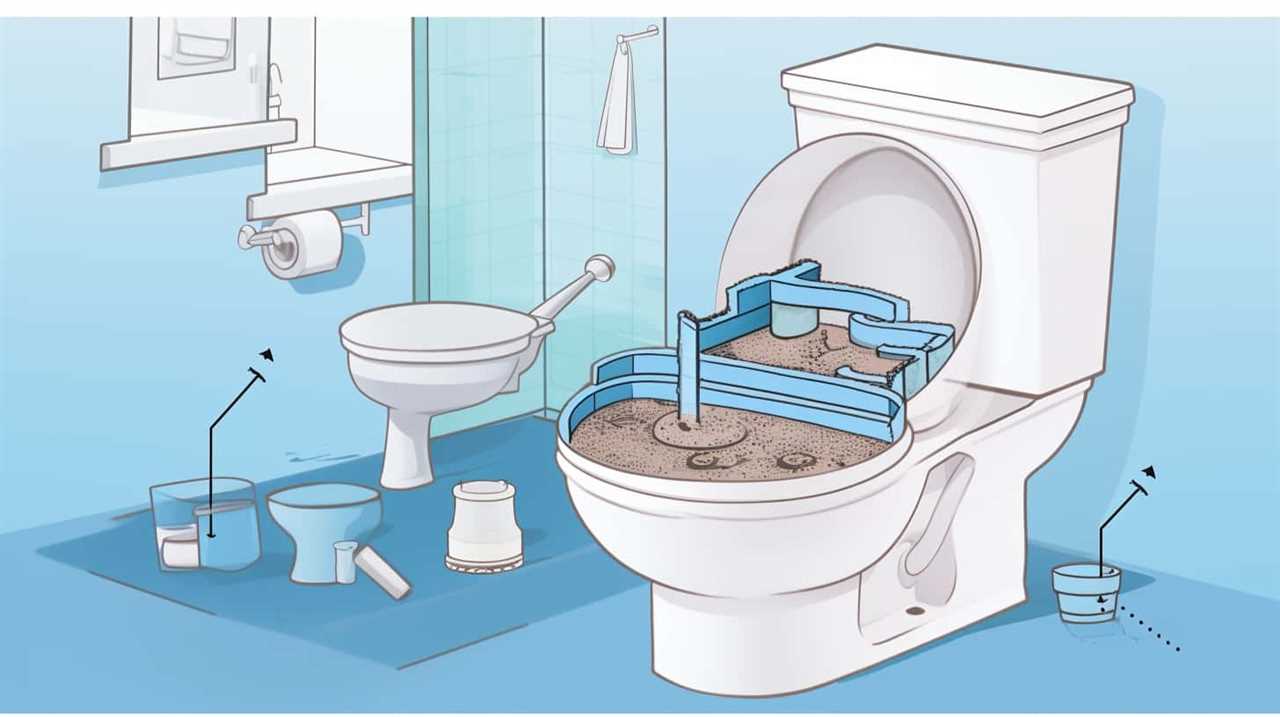
Can I Convert My Single Flush Toilet Into a Dual Flush Toilet?
Converting our single flush toilet to a dual flush was a game-changer. We cut water consumption in half and reduced our environmental impact. The converting process was simple and the benefits are worth it.
Are There Any Disadvantages to Using a Dual Flush Toilet?
There are some disadvantages to using a dual flush toilet, particularly in terms of the environmental impact. These toilets can use more water overall compared to single flush toilets, which can increase water consumption.
How Do I Properly Maintain and Clean a Dual Flush Toilet?
To properly maintain and clean a dual flush toilet, follow these maintenance tips. Regularly clean the toilet bowl and seat using a non-abrasive cleaner. Check and replace any worn-out parts if necessary.
Are There Any Regulations or Standards Regarding the Use of Single Flush or Dual Flush Toilets in My Area?
In our area, there are regulations and standards for both single flush and dual flush toilets. These guidelines ensure water efficiency and conservation. Single flush toilets use a fixed amount of water, while dual flush toilets allow for different water volumes depending on the waste.
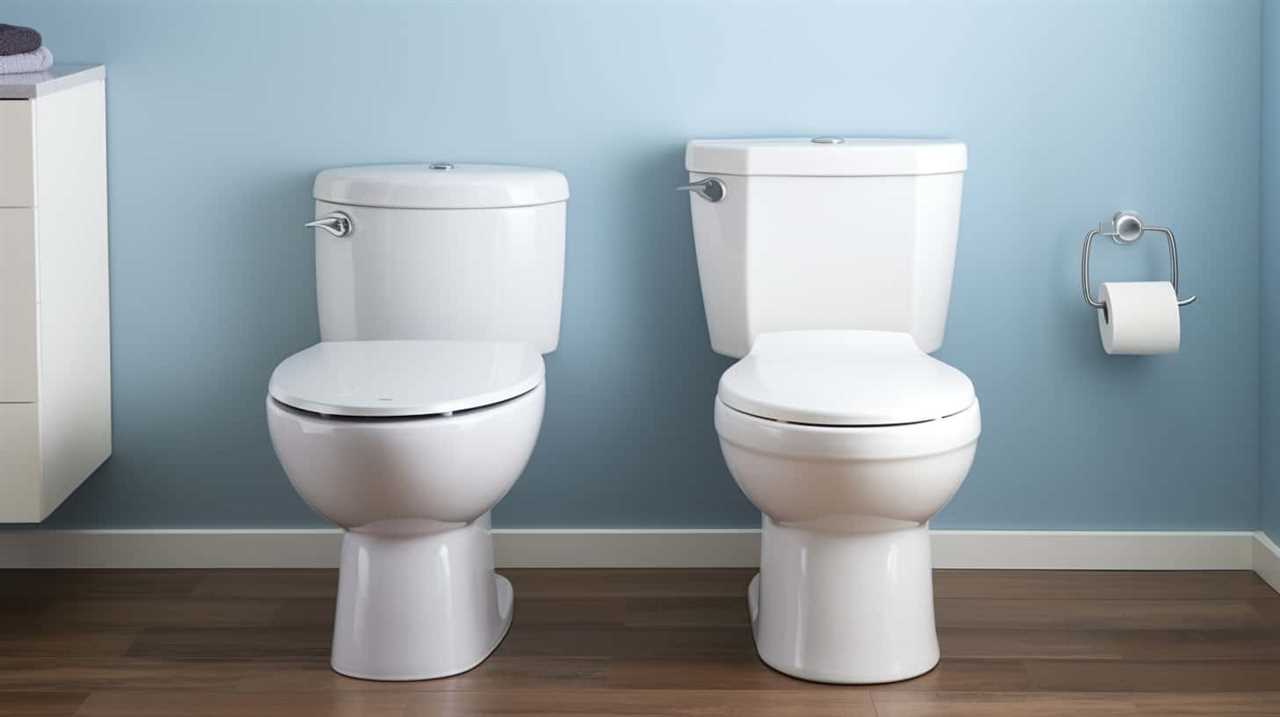
Conclusion
In conclusion, when comparing single flush and dual flush toilets, it’s evident that the latter offers significant advantages.
With lower water usage, improved functionality, and reduced environmental impact, dual flush toilets are a more sustainable and cost-effective choice.
Considering factors such as water conservation, functionality, and cost, it becomes clear that dual flush toilets are the ideal option for those seeking an efficient and environmentally friendly toilet solution.

